Testing multimeters as well as measurement errors

A study was made of the work of digital multimeters in the mode of an alternating current voltmeter and a switch instrument. In normal and abnormal modes, on currents of various shapes - both of symmetrical polarity, and in the presence of a constant component.
Content of publication:
- Description of the instruments used, and their initial calibration
- Test for sinusoidal current of various frequencies
- Rectangular current test
- DC Rect Current Test
- Test with arbitrary waveforms, incl. pulsed
- Significant conclusion
- Voting
The list of experimental devices, they are all connected in parallel:
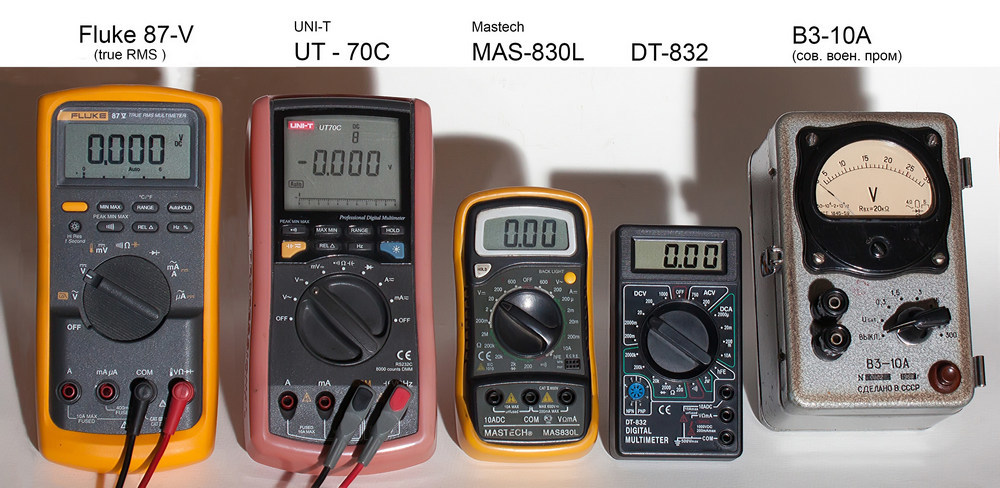
')
The Fluke 87-V is a high-quality automatic multimeter capable of calculating the effective (rms) true rms value of measured currents and voltages.
UT-70C - workhorse, dragged everywhere and everywhere. Released by the popular firm Uni-T, also automatic, but not “true rms”.
And the main characters of the study are the low-cost MAS-830L device from Mastech, and the completely rootless DT-832, which are usually filled with buckets for delivery. I rented them from different places to avoid possible glitches of a specific single instance.
Passport data of these devices per AC. stress
Fluke 87-V
AC voltage 0.1 mV - 1000 V
Resolution 1 mV
Frequencies up to 20 kHz
Declared accuracy of 0.7% or 2 units. ml. discharge
UT-70C
AC voltage up to 1000 V
Resolution 1 mV
Frequencies 40 - 400 Hz
Declared accuracy of 1.5% or 4 units. ml. discharge
Mastech M830L
AC voltage 0.1 V - 600 V
Resolution 10 mV
Frequencies 40 - 400 Hz
Declared accuracy of 0.5% or 2 units. ml. discharge
DT 832
AC voltage 0.1 V - 750 V
Resolution 0.1 V
Frequencies 40 - 400 Hz
Declared accuracy of 1.2% or 10 units. ml. discharge
AC voltage 0.1 mV - 1000 V
Resolution 1 mV
Frequencies up to 20 kHz
Declared accuracy of 0.7% or 2 units. ml. discharge
UT-70C
AC voltage up to 1000 V
Resolution 1 mV
Frequencies 40 - 400 Hz
Declared accuracy of 1.5% or 4 units. ml. discharge
Mastech M830L
AC voltage 0.1 V - 600 V
Resolution 10 mV
Frequencies 40 - 400 Hz
Declared accuracy of 0.5% or 2 units. ml. discharge
DT 832
AC voltage 0.1 V - 750 V
Resolution 0.1 V
Frequencies 40 - 400 Hz
Declared accuracy of 1.2% or 10 units. ml. discharge
A switch-type voltmeter of alternating current B3-10A of Soviet production, released in 1969, also participates in the experiments. This is a good quality device. This copy slightly underestimates by several percent, but it will be repaired over time. In tests, it is used at the “3v” measurement limit.
Learn more about the V3-10A voltmeter here.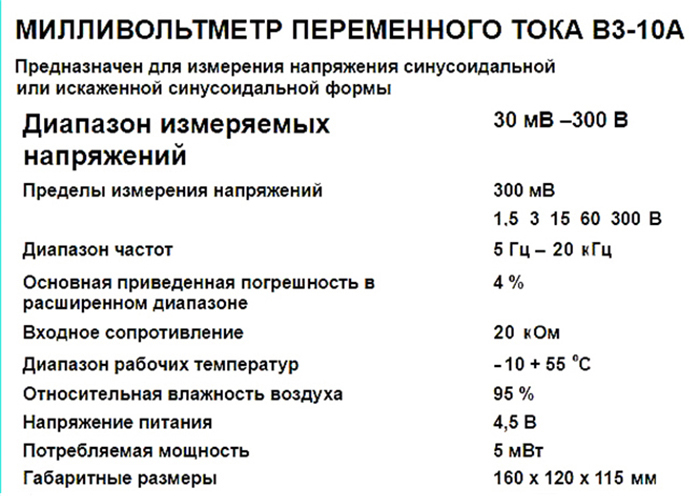
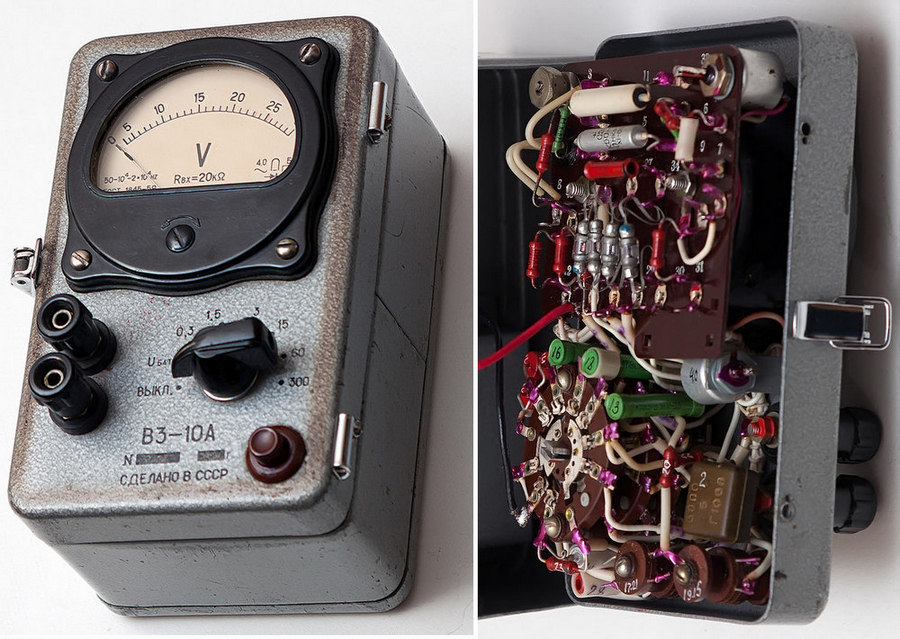
On the schematic diagram, the color indicates the passage of the signal to the measurement mode "3v".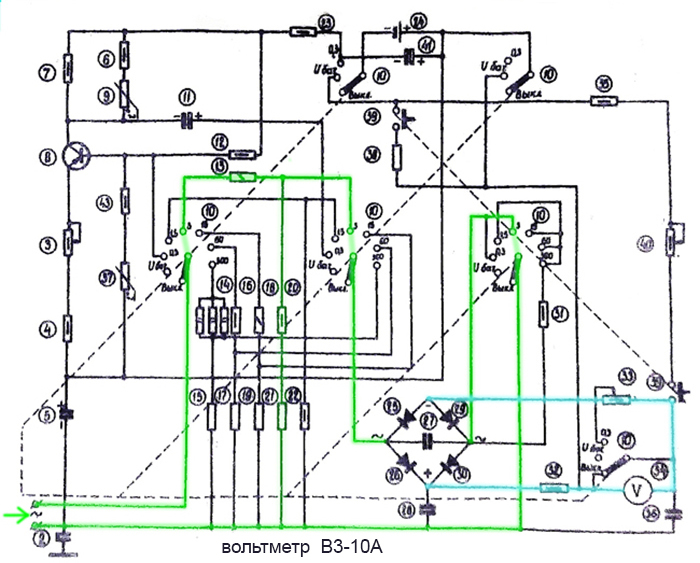
As you can see, this is a regular voltmeter with a diode rectifier. The truth is made very securely, using high-quality components.
And this copy is really from the military:
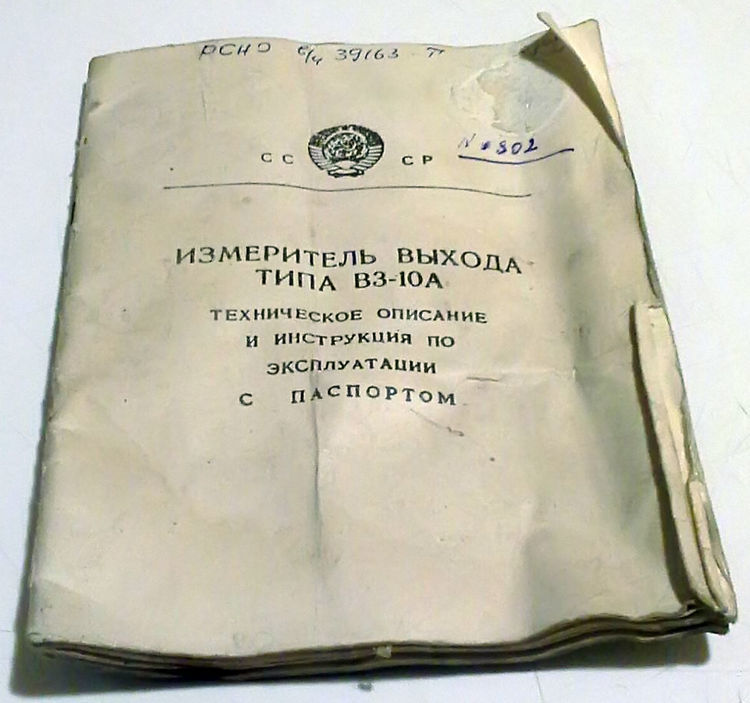


On the schematic diagram, the color indicates the passage of the signal to the measurement mode "3v".

As you can see, this is a regular voltmeter with a diode rectifier. The truth is made very securely, using high-quality components.
And this copy is really from the military:

A visual monitor of the signals supplied to the devices will be using a Lecroy 9354TM digital oscilloscope. He is also shaggy, but still works fine.
Oscilloscope appearance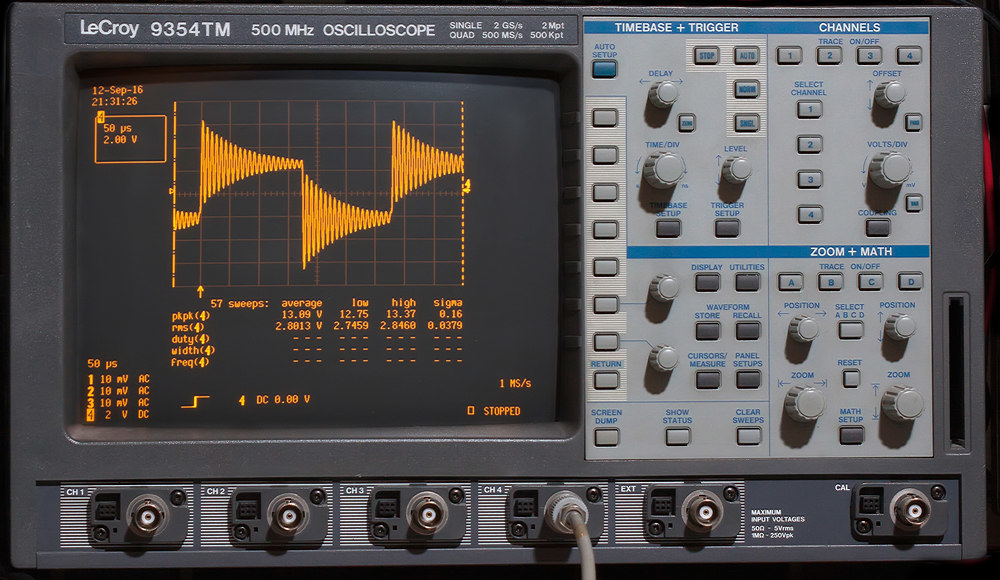

Under the waveform of the signal is the statistics of its parameters. The most interesting for this study are those that are highlighted in the photo brightness:
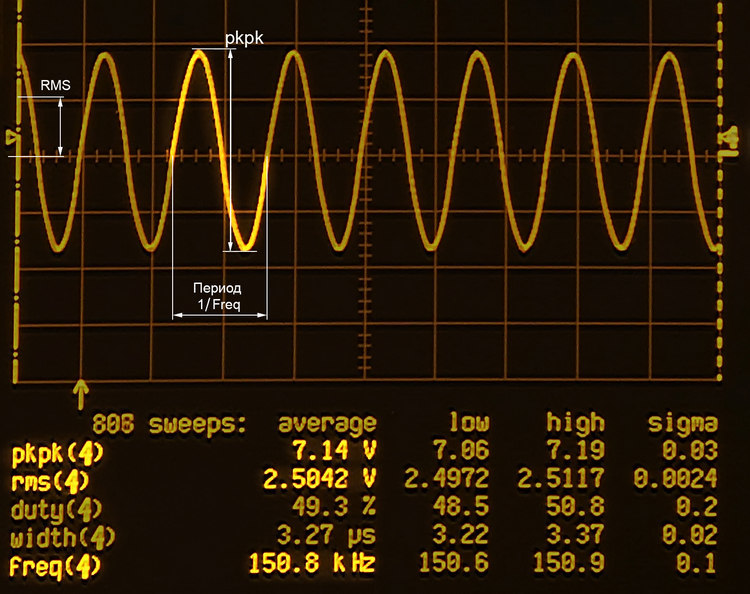
pkpk - full amplitude swing
RMS - RMS value
freq - the frequency of the signal under study, or its pulses
In the average column we observe the average value of the parameter, low and high - min. and max its values within a sample, sigma is the standard deviation. We will use only the data from the column average .
Calibration
We supply on digital multimeters 220 v from the socket. The switch voltmeter is disabled for now. he has not yet received post-purchase prophylaxis.

Also let's calibrate on the constant, including let's see what the gauge shows. Serving 2.5 v from the power supply. The oscilloscope is a bit overpriced - as it turned out compared to fluke.
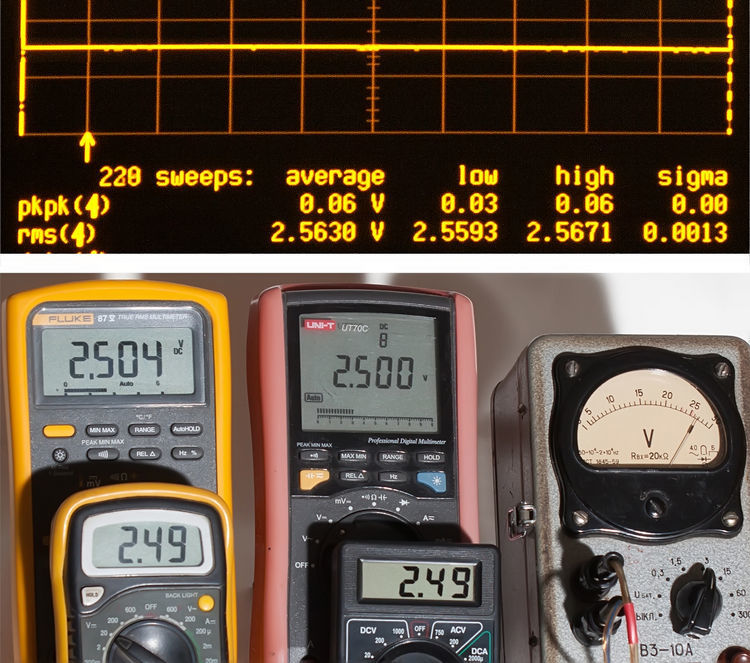
According to this template, all photos are organized in the future: first, the oscillogram, under it readings of instruments.
Now making sure that the devices are working, we start the tests. Signals are supplied from low-voltage GSS type G3-36A. Of course, he is not a digital camera, but even better is closer to real conditions.
Sinusoidal alternating current of different frequency
We supply a voltage of 2.5 v at frequencies of 30 Hz, 300 Hz, 3 kHz, 20 kHz, 50 kHz, and 150 kHz.
Details under the cut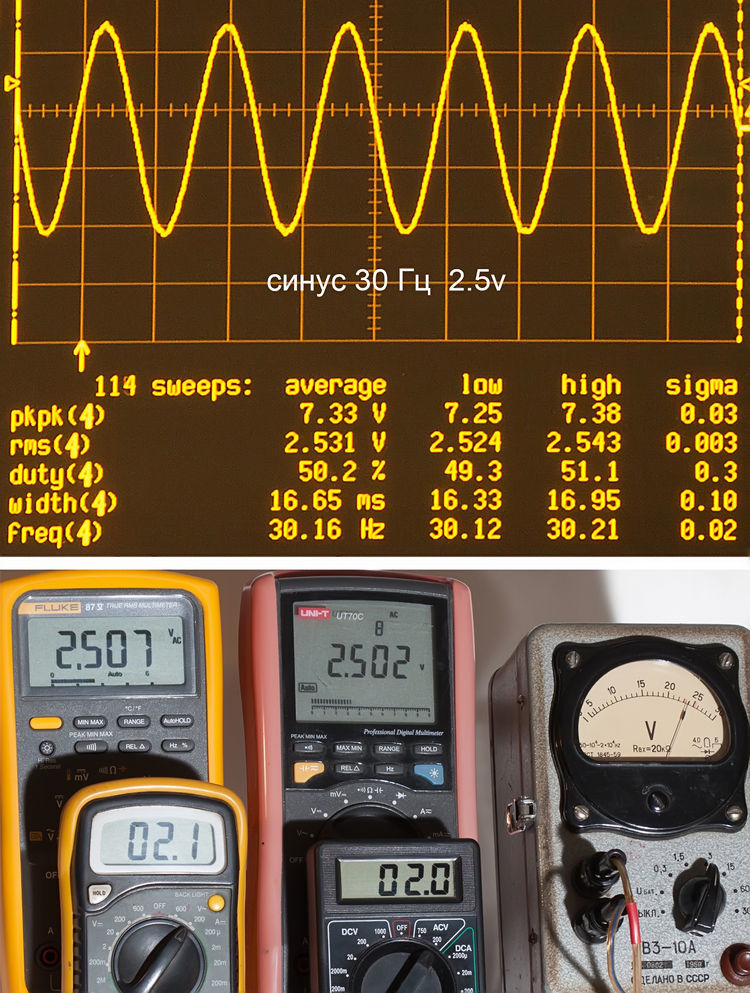
-------------------------------------------------- ----------------------------

-------------------------------------------------- ----------------------------
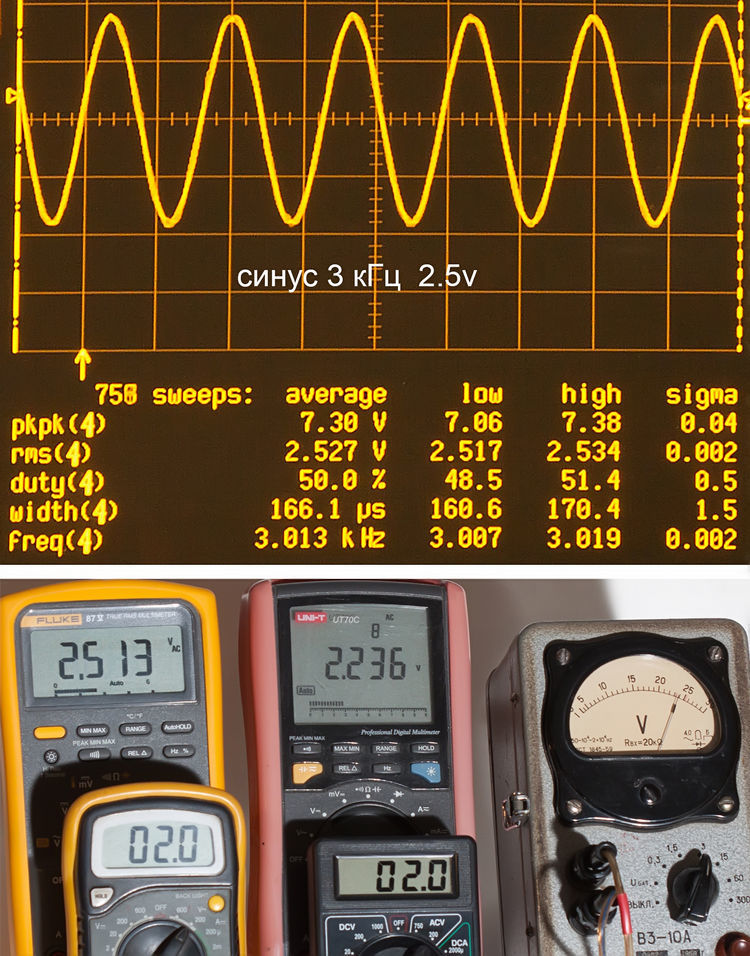
-------------------------------------------------- ----------------------------
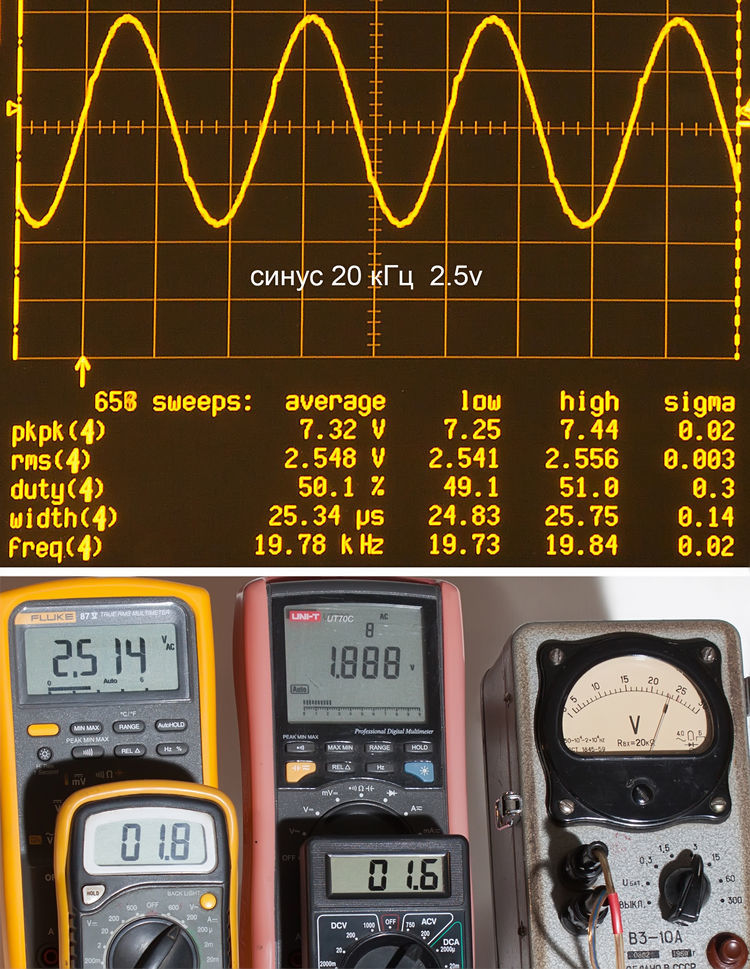
-------------------------------------------------- ----------------------------
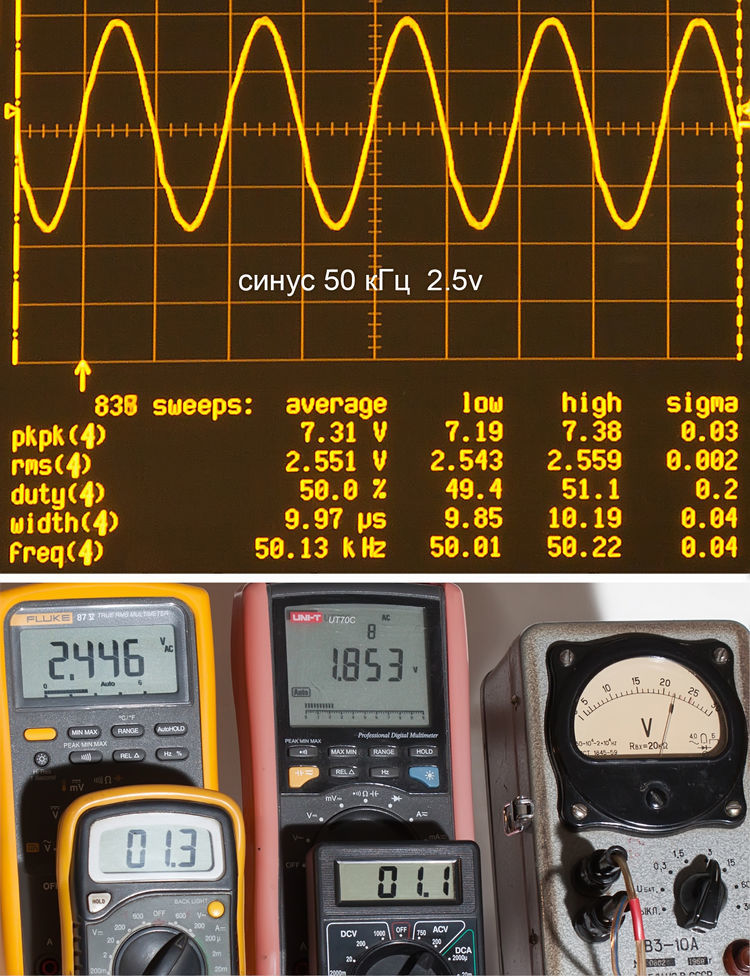
-------------------------------------------------- ----------------------------
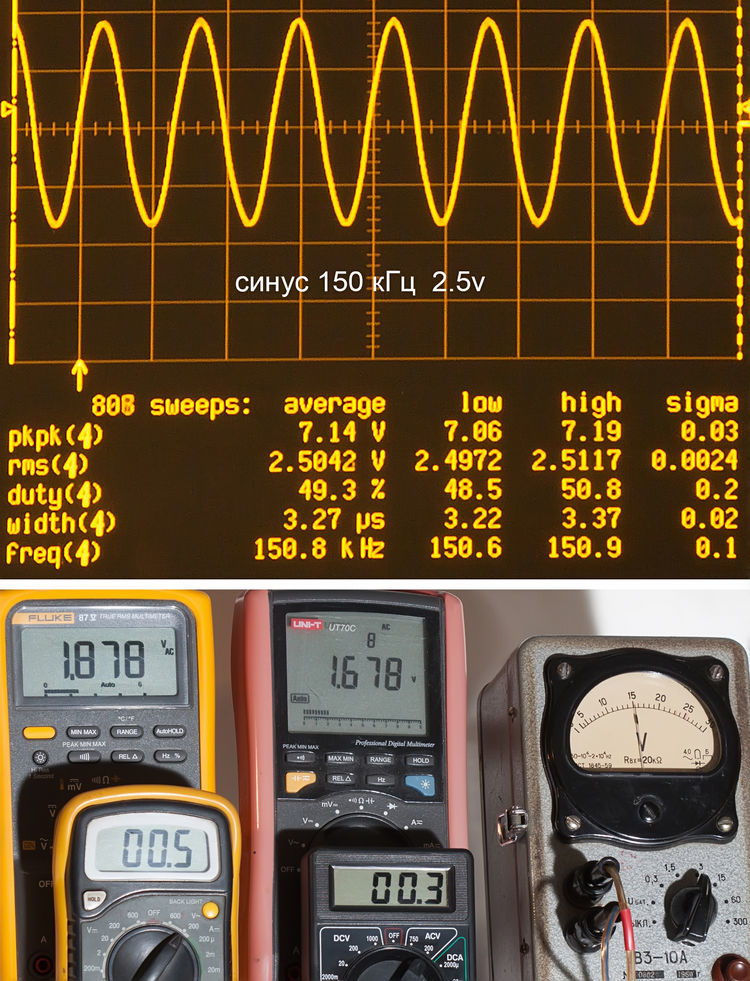

-------------------------------------------------- ----------------------------

-------------------------------------------------- ----------------------------

-------------------------------------------------- ----------------------------

-------------------------------------------------- ----------------------------

-------------------------------------------------- ----------------------------

The first, strangely enough, began to merge UT70C from 3 kHz. At the same time, inexpensive multimeters slipped this barrier - unless, of course, not to assume that from the very beginning their error was as much as 16% downward. At 20 kHz, their testimony cannot even be called estimated, so only Fluke and the pointer were adequate. Which passed 50 kHz is still around, but it is already meaningless to measure higher frequencies.
Rectangular current test
This mode, like all further ones, is non-standard for non-“true rms” devices, but we will still conduct research. We supply approximately 2.5 v square voltage at 30 Hz, 3 kHz, 30 kHz, and 100 kHz.
Details under the cut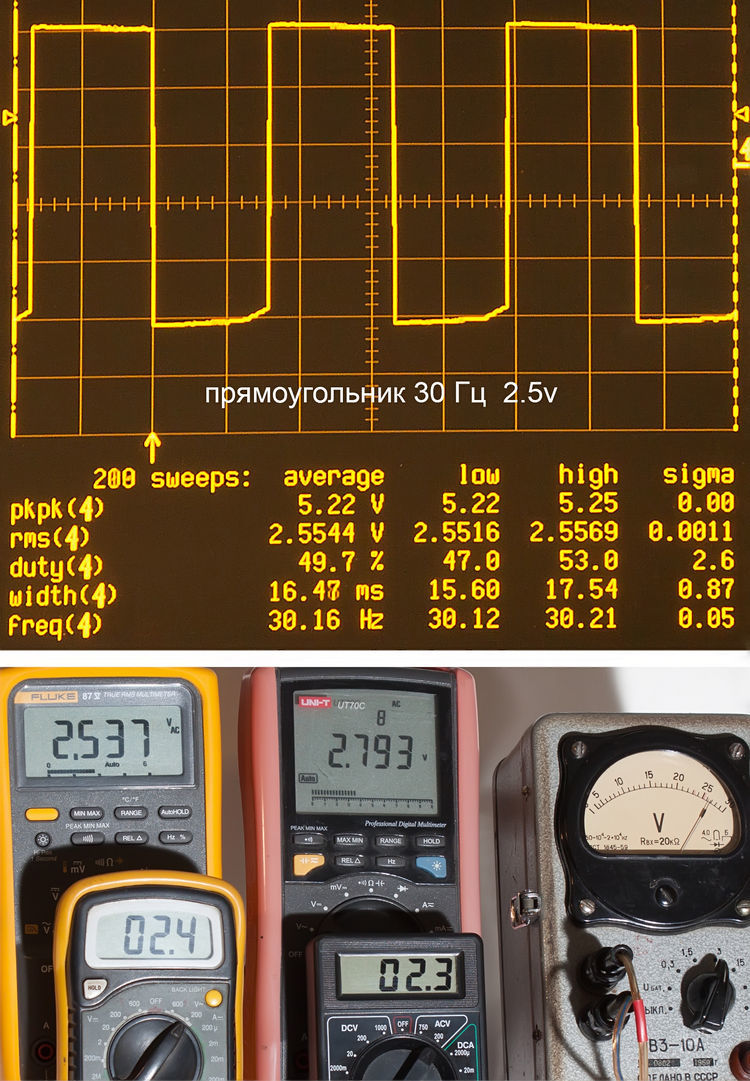
-------------------------------------------------- ----------------------------
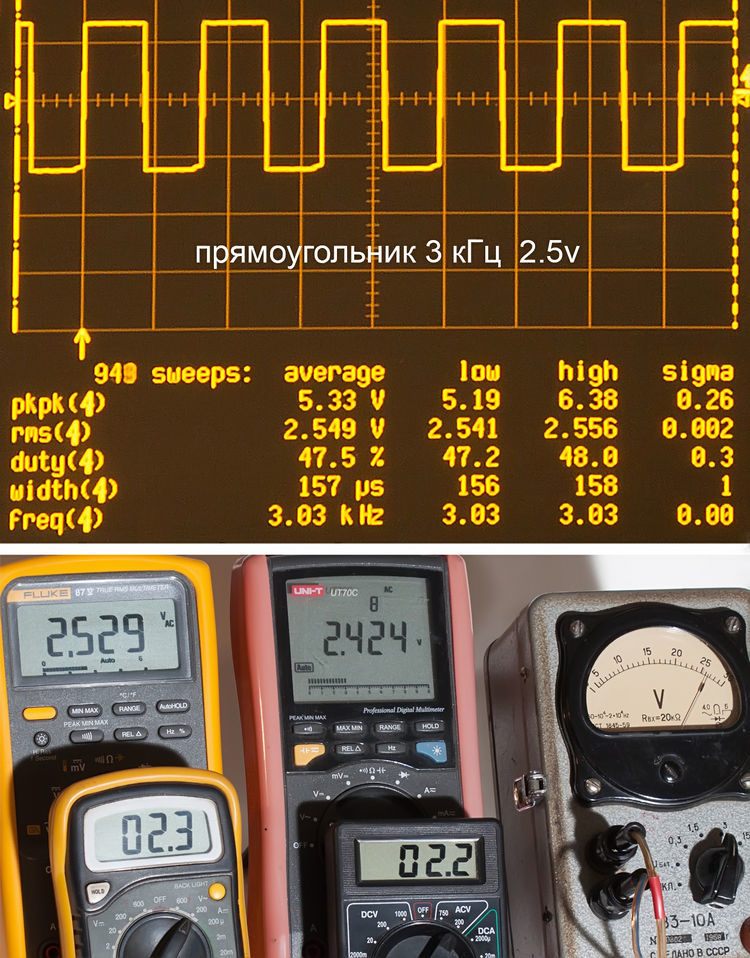
-------------------------------------------------- ----------------------------
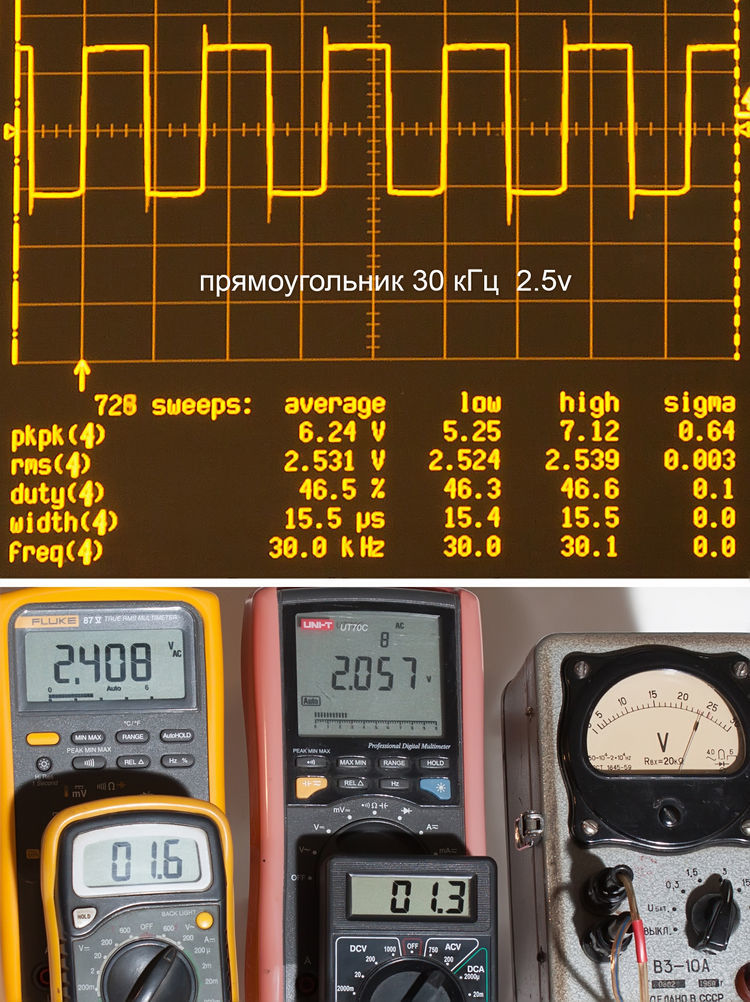
-------------------------------------------------- ----------------------------
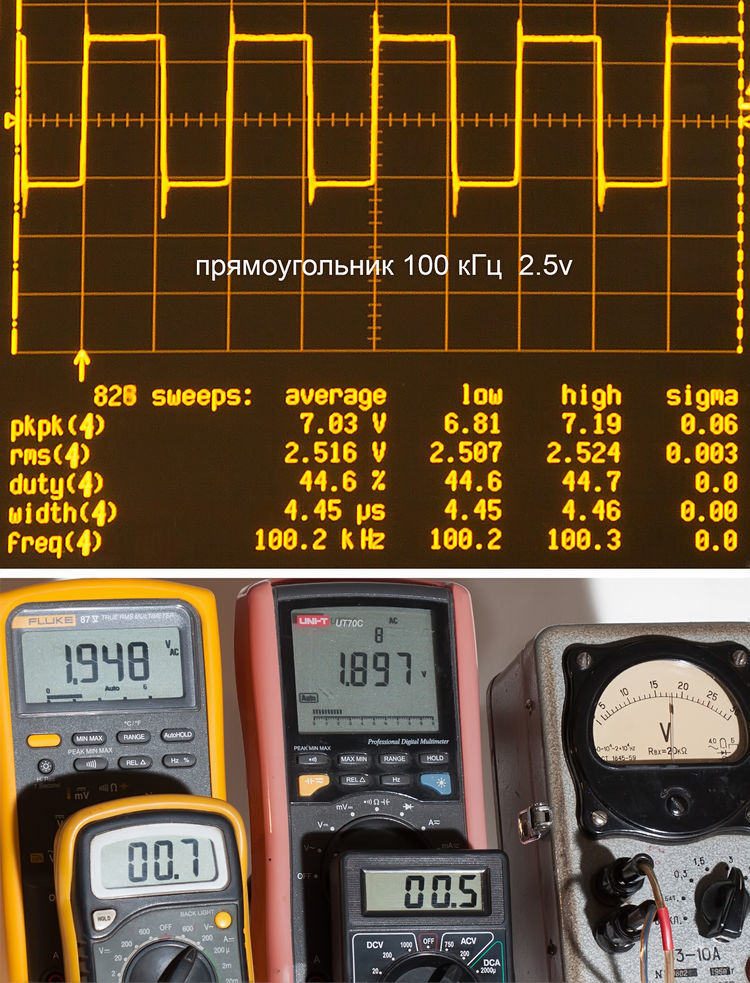

-------------------------------------------------- ----------------------------

-------------------------------------------------- ----------------------------

-------------------------------------------------- ----------------------------

The readings of cheap multimeters have become more adequate at frequencies up to 3 kHz. But the UT70C on Hertz was a bit overstated, but leveled closer to the point at 3 kHz. Higher frequencies pulled only Fluk and arrow.
DC signal with a constant component
Let's see how the instruments behave at them at frequencies of 300 Hz, 3 kHz, 50 kHz, and 200 kHz.
Details under the cut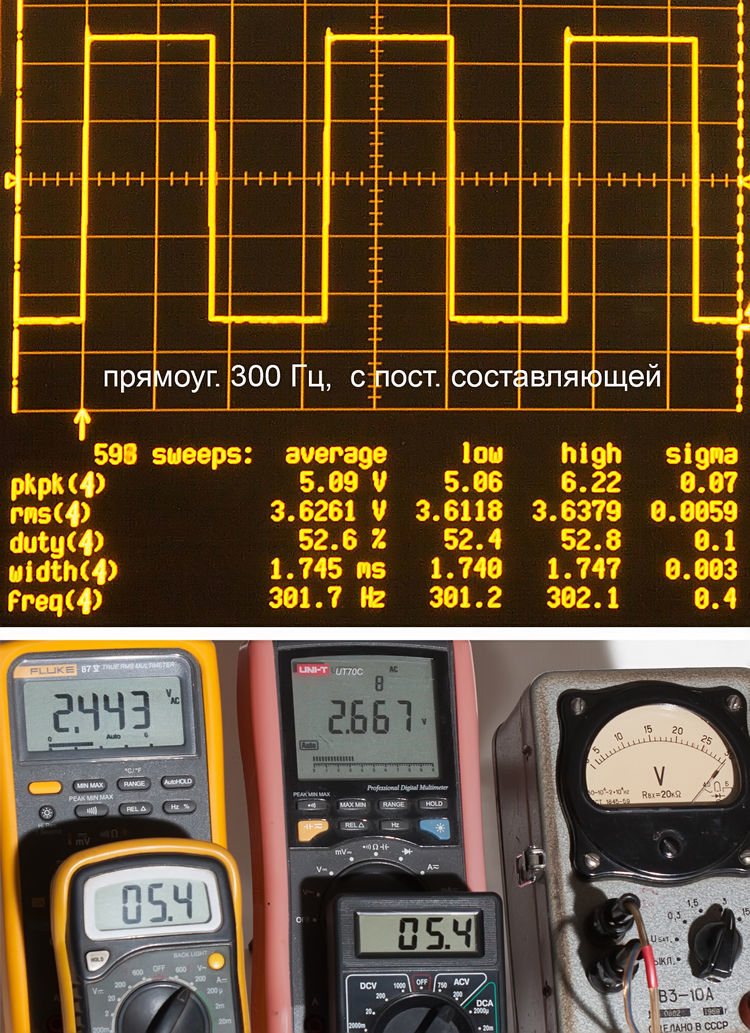
-------------------------------------------------- ----------------------------
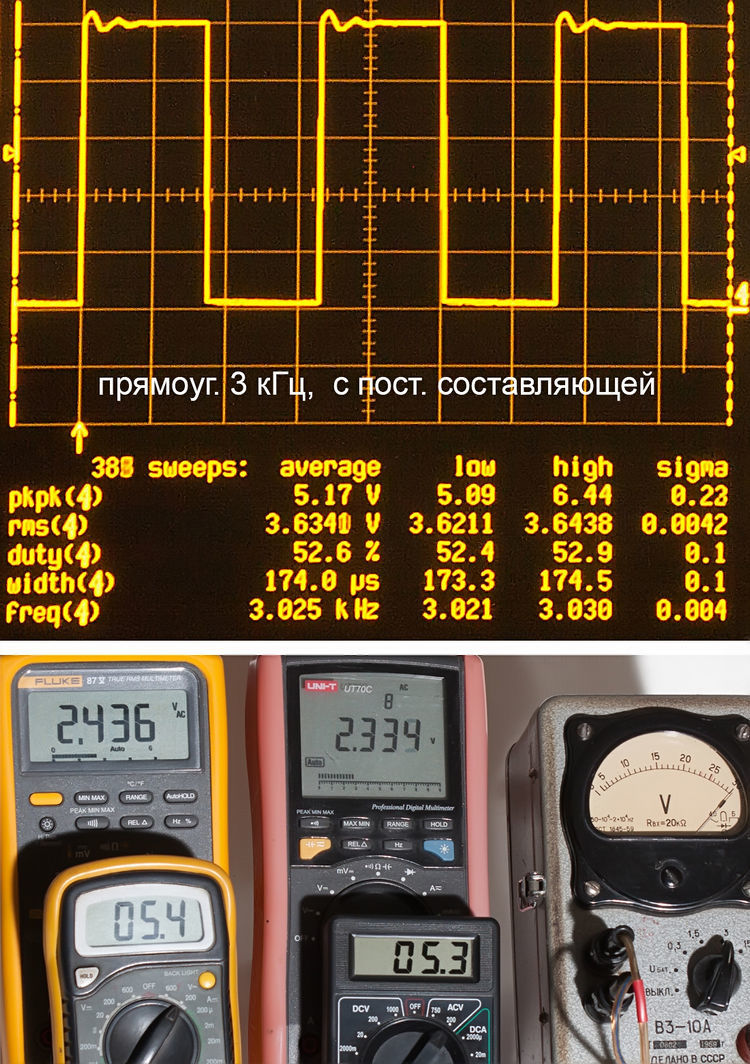
-------------------------------------------------- ----------------------------
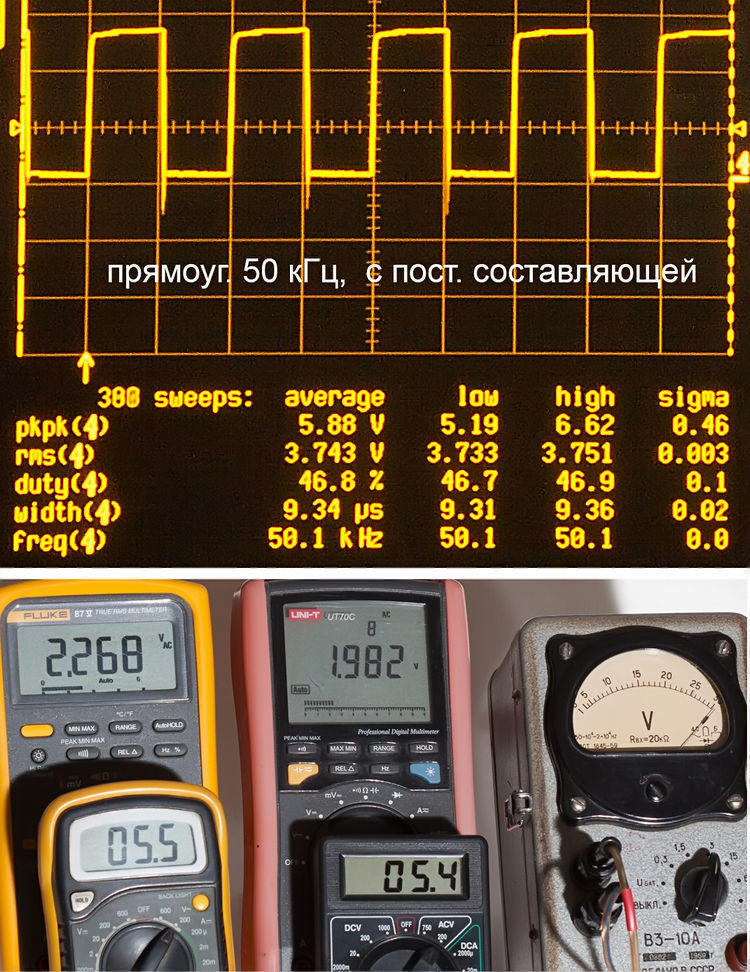
-------------------------------------------------- ----------------------------
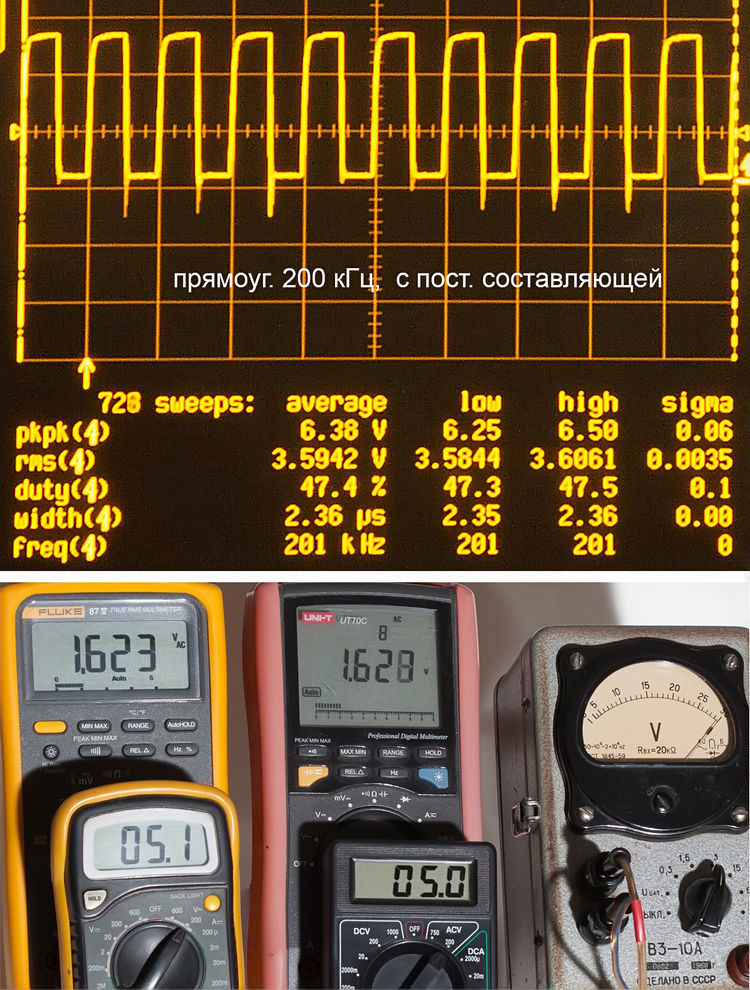

-------------------------------------------------- ----------------------------

-------------------------------------------------- ----------------------------

-------------------------------------------------- ----------------------------

Inexpensive multimeters proved to be very effective, for them the frequency barrier seems to have lost relevance. While normal devices to the last try to work the
We give signals of complex shape
Which are obtained by distorting the rectangular voltage by coils and capacitors.
Details under the cut
-------------------------------------------------- ----------------------------
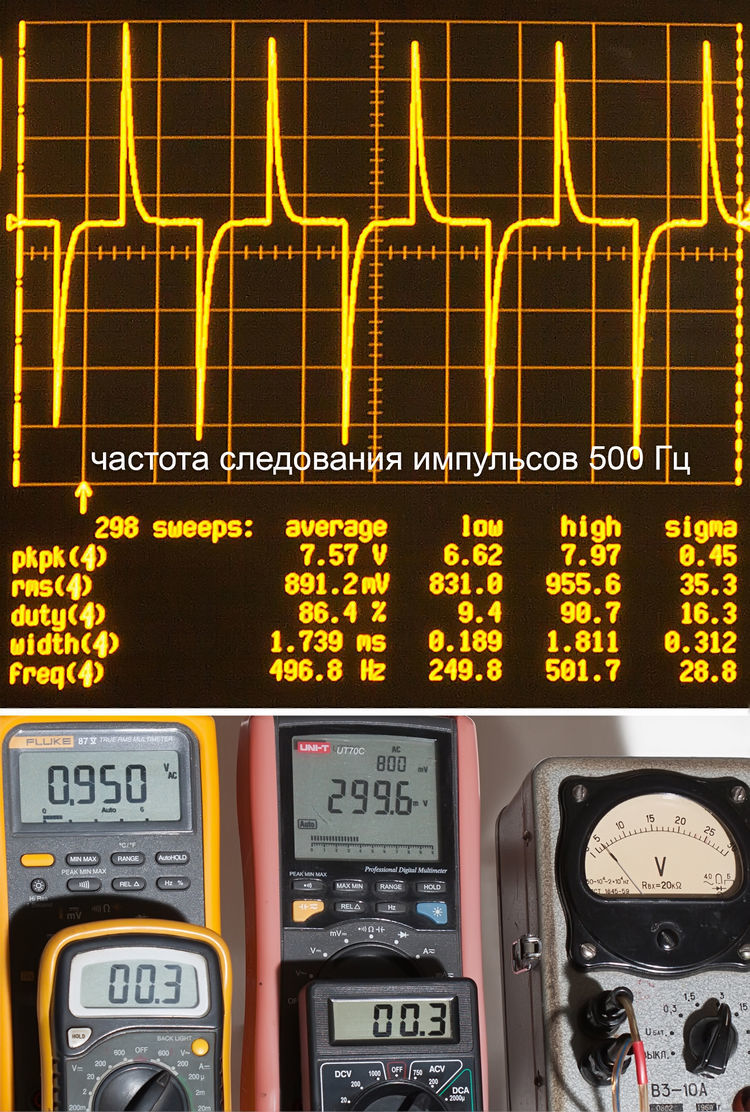
-------------------------------------------------- ----------------------------

-------------------------------------------------- ----------------------------
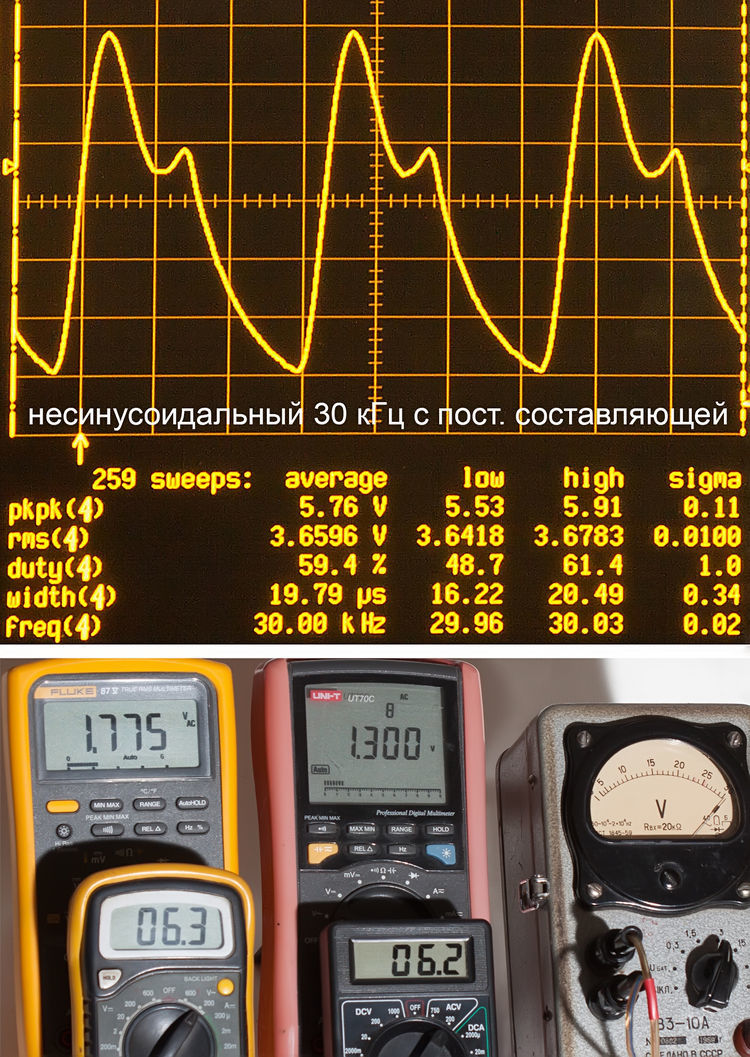

-------------------------------------------------- ----------------------------

-------------------------------------------------- ----------------------------

-------------------------------------------------- ----------------------------

On the first signal with the main frequency of 5 kHz - adequate readings only from Fluk and the needle instrument.
Short bipolar pulses normally digest Flück (and of course the oscilloscope too). But cheap devices practically do not see them. UT-70C gives an error of more than half the current value, and the arrow is also considerable.
The third experiment at 30 kHz is a better result than the previous one, but the error is nonetheless noticeable.
In the fourth experiment, a constant current was applied again. Cheap multimeters and this time gave an amplitude value, so even with some excess.
Upon completion of any research, it is necessary to draw a conclusion.
In this case, it can be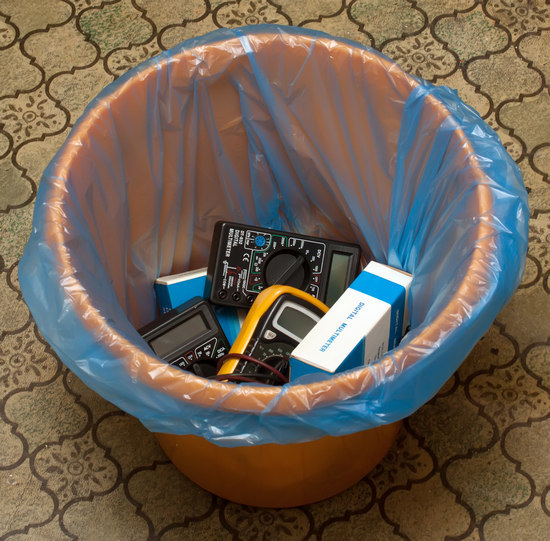

Updated: I will add two comments from readers,
clarifying the paradox of this article
All those who criticized “were measured not by that, not so and not that”: the article, IMHO, is a continuation of the cycle about the builders of superunit generators and is designed to show that all these geniuses from physics and electrical engineering, using cheap multimeters, measure a spherical horse in a vacuum and not the real picture in their generators.
This is not a comparative review of testers, this is a review of testers as applied specifically to the parties, when such testers try to measure something at megahertz frequencies (or constant with complex high-frequency spikes).

Yes, but it is clear only to those who read these previous articles. Even not so much the articles themselves, as comments to them.
For those who have not read and opens this article, it looks exactly like a simple comparative test of multimeters, and as a conclusion that “you can't use this Chinese g ...”, buy all Flukes and everything else in the bin. Although the conclusion just from all the tests performed can be completely different (opposite) to do - for their field of application, cheap Chinese testers are even surprisingly adequate - they give exactly what the manufacturers have stated and how much is paid (taking into account the price, even perhaps more than can be expected for such a price ) ...
All those who criticized “were measured not by that, not so and not that”: the article, IMHO, is a continuation of the cycle about the builders of superunit generators and is designed to show that all these geniuses from physics and electrical engineering, using cheap multimeters, measure a spherical horse in a vacuum and not the real picture in their generators.
This is not a comparative review of testers, this is a review of testers as applied specifically to the parties, when such testers try to measure something at megahertz frequencies (or constant with complex high-frequency spikes).
Yes, but it is clear only to those who read these previous articles. Even not so much the articles themselves, as comments to them.
For those who have not read and opens this article, it looks exactly like a simple comparative test of multimeters, and as a conclusion that “you can't use this Chinese g ...”, buy all Flukes and everything else in the bin. Although the conclusion just from all the tests performed can be completely different (opposite) to do - for their field of application, cheap Chinese testers are even surprisingly adequate - they give exactly what the manufacturers have stated and how much is paid (taking into account the price, even perhaps more than can be expected for such a price ) ...
Source: https://habr.com/ru/post/397385/
All Articles